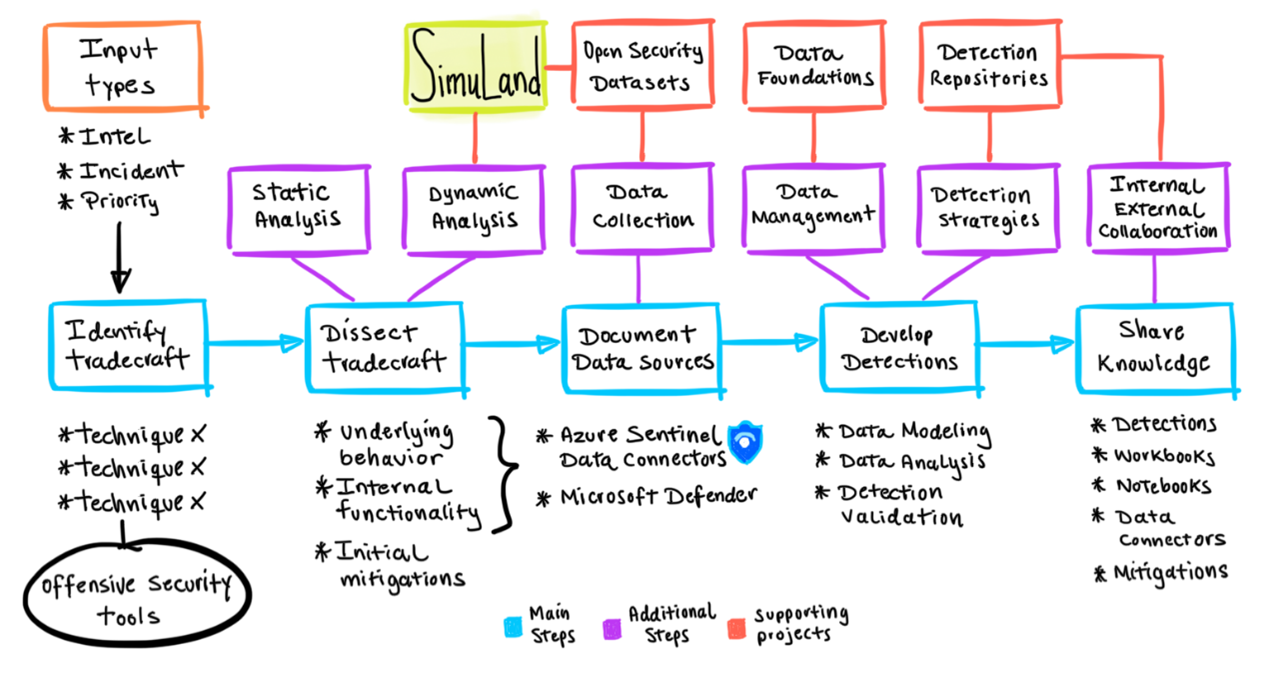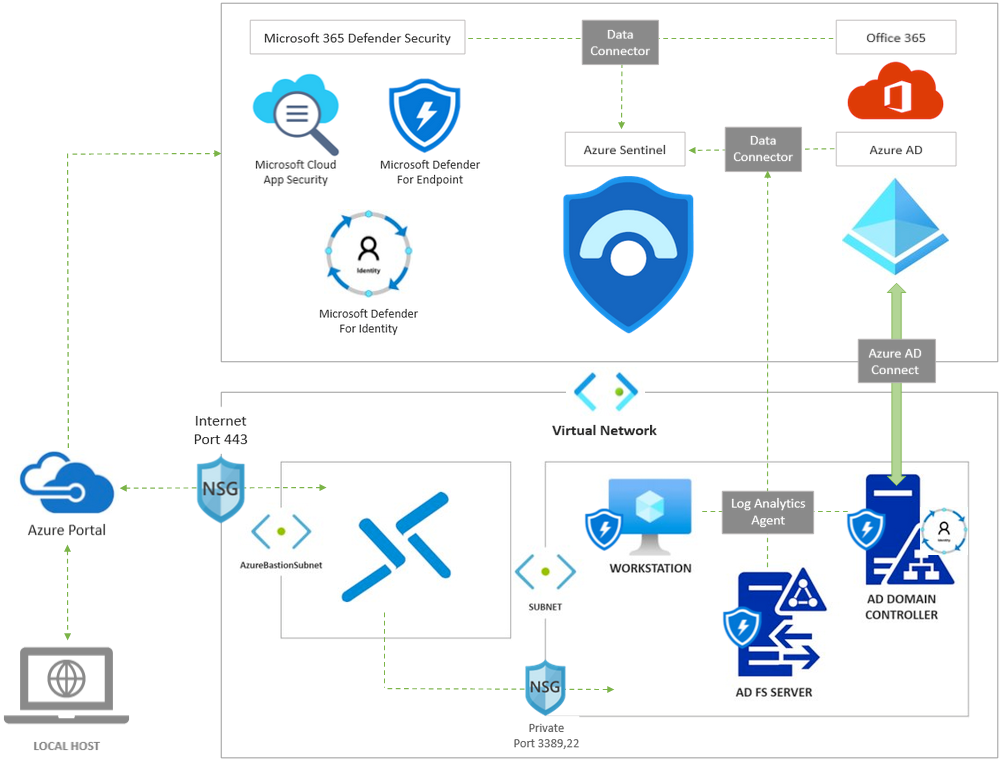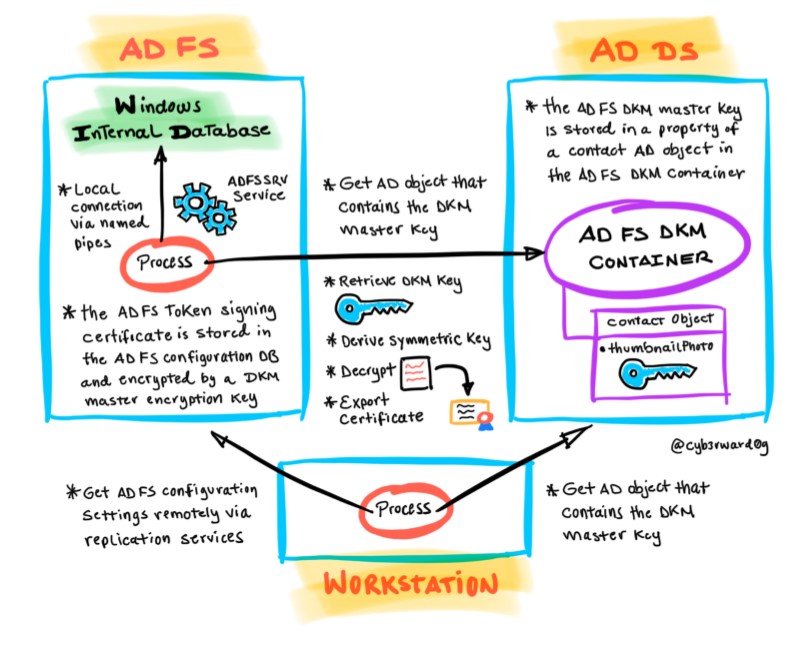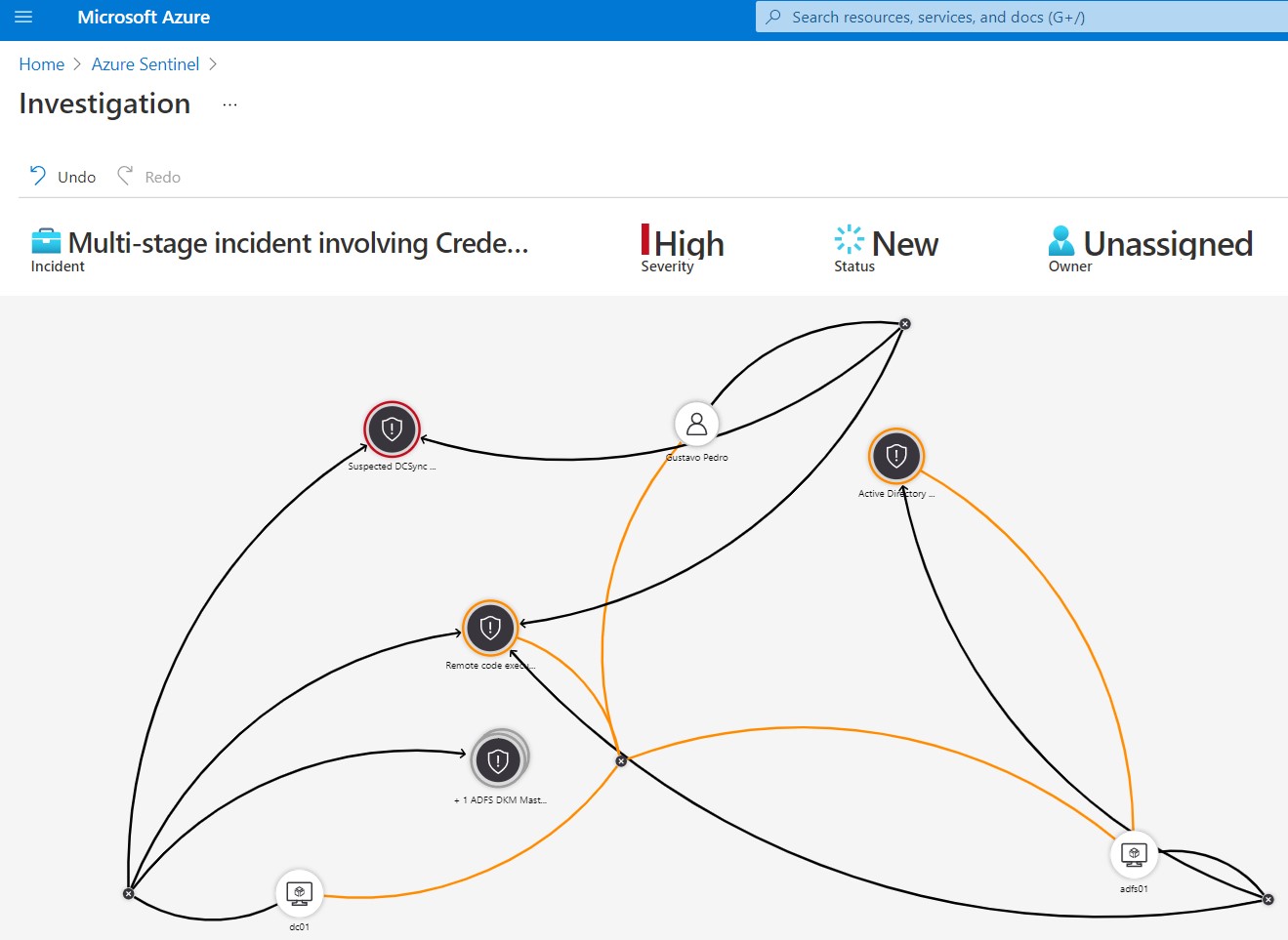At Microsoft, we continuously collaborate with customers and the InfoSec community to learn more about the latest adversary tradecraft so that we can improve our detection strategies across all our security services. Even though those detections are already built into our products, and protecting customers today, we believe it is important for security researchers to go beyond alerts and detections to understand the underlying attack behaviors and technical implementation of adversary techniques. This also empowers others in the InfoSec community to better respond to investigations of related attacks. To help the broader security community with these efforts, we are releasing SimuLand.
What is SimuLand?
SimuLand is an open-source initiative by Microsoft to help security researchers around the world deploy lab environments that reproduce well-known techniques used in real attack scenarios, actively test and verify the effectiveness of related Microsoft 365 Defender, Azure Defender, and Azure Sentinel detections, and extend threat research using telemetry and forensic artifacts generated after each simulation exercise.
These lab environments will provide use cases from a variety of data sources including telemetry from Microsoft 365 Defender security products, Azure Defender, and other integrated data sources through Azure Sentinel data connectors.
The purpose behind SimuLand
As we build out the SimuLand framework and start populating lab environments, we will be working under the following basic principles:
- Understand the underlying behavior and functionality of adversary tradecraft.
- Identify mitigations and attacker paths by documenting preconditions for each attacker action.
- Expedite the design and deployment of threat research lab environments.
- Stay up to date with the latest techniques and tools used by real threat actors.
- Identify, document, and share relevant data sources to model and detect adversary actions.
- Validate and tune detection capabilities.
Process integration
Our goal is to have SimuLand integrated with threat research methodologies where dynamic analysis is applied to end-to-end simulation scenarios. The image below shows where SimuLand would fit.

Figure 1: Map of threat research methodologies.
The structure
The structure of the project is very simple and broken down in a modular way so that we can re-use and test a few combinations of attacker actions with different lab environment designs. In addition, step-by-step lab guides are provided to aggregate all the required documentation to not only execute the end-to-end simulation exercise but also prepare and deploy the lab environment. This initiative stems from various open-source projects such as Azure Sentinel2Go and Blacksmith from the Open Threat Research (OTR) community.
How to prepare
Almost every environment contributed through this initiative requires at least a Microsoft 365 E5 license (paid or trial) and an Azure tenant. Other deployment requirements are specified in the lab guides.
The deployment process
Depending on the lab guide being worked on, the design of the network environments might change a little. While some labs will replicate a hybrid cross-domain environment (on-premises to cloud), others will focus only on resources in the cloud. Additionally, Azure Resource Manager (ARM) templates are provided to expedite the deployment process and document the infrastructure as code. The image below represents the first environment released today.

Figure 2: Network environment.
Simulate and detect
Every simulation plan provided through this project is research-based and broken down into attacker actions mapped to the MITRE ATT&CK framework. The goal of the simulate and detect component is to also summarize the main steps used by a threat actor to accomplish a specific object and allow security researchers to get familiarized with the attacker behavior at a high level. For example, the image below shows some of the ways one could export the token signing certificate from a federation server.

Figure 3: Example of exporting token signing certificate from federation server.
Organize security alerts
Finally, from a defensive perspective, simulation steps will be mapped to detection queries and alerts from Microsoft 365 Defender security products, Azure Defender, and Azure Sentinel. You can use similar views like the one below from the Microsoft 365 security portal to organize security alerts. We believe this will help guide some of the extended threat research generated from the simulation exercise.

Figure 4: Microsoft 365 Defender security portal.
You can also use the Azure Sentinel investigation experience to aggregate alerts from Microsoft 365 defender and Azure Sentinel to provide additional context.

Figure 5: Azure Sentinel investigation view.
Future work
Besides creating more scenarios, we are also going to be working on several features to improve the project. The list below shows some of the ideas we currently have:
- A data model to document the simulation steps in a more organized and standardized way.
- A CI/CD pipeline with Azure DevOps to deploy and maintain infrastructure.
- Automation of attack actions in the cloud via Azure Functions.
- Capabilities to export and share telemetry generated with the InfoSec community.
- Microsoft Defender evaluation labs integration.
Community contributions
We look forward to contributions and feedback from the community. If you would like to contribute to specific areas of the project, open an issue in our GitHub repository and share your ideas. Take a look at the “Future Work” section for some ideas.
New end-to-end simulation scenarios
If you would like to share a new end-to-end attacker path, let us know by opening an issue in our GitHub repository, and we would be happy to collaborate and provide some resources to make it happen. We would then share the output with the community through this project after the appropriate validation and detection development process. Remember that simulation scenarios are not only based on well-known attack paths, but also the creativity of the researcher.
Additional detection queries
If you build detection rules that can be added to our simulate and detect section, feel free to open an issue and we will help you to contribute to the official Microsoft 365 Defender and Azure Sentinel detection repositories. We use queries directly from those two resources in our documents.
Learn more
To learn more about this open-source initiative, visit the SimuLand GitHub repository.
To learn more about Microsoft Security solutions, visit our website. Bookmark the Security blog to keep up with our expert coverage on security matters. Also, follow us at @MSFTSecurity for the latest news and updates on cybersecurity.
from Hacker News https://ift.tt/3oKPDkR
No comments:
Post a Comment
Note: Only a member of this blog may post a comment.